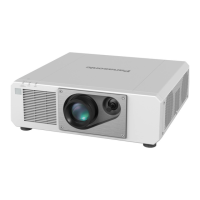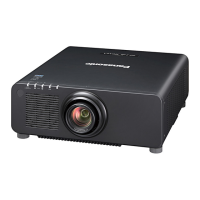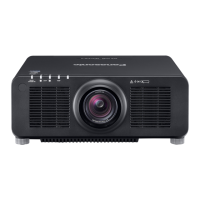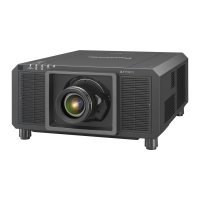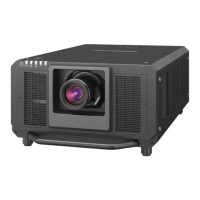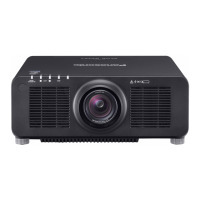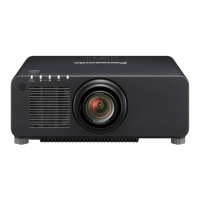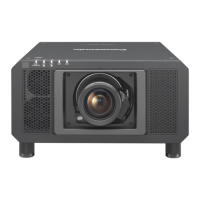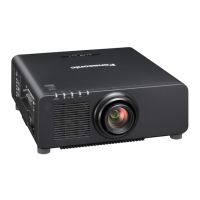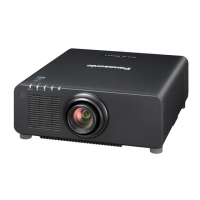Chapter 7 Appendix — Technical information
ENGLISH - 277
<SERIAL IN> / <SERIAL OUT> terminal
The <SERIAL IN> / <SERIAL OUT> terminal of the projector conforms with RS-232C so that the projector can be
connected to and controlled from a computer.
Connection
Single projector
Projector connecting terminals
Computer
D-Sub 9p (male)
Communication cable (straight)
D-Sub 9p (female) D-Sub 9p (male)
Multiple projectors
D-Sub 9p (female) D-Sub 9p (male)
Connecting terminals on projector 2
D-Sub 9p (female) D-Sub 9p (male)
Connecting terminals on projector 1
Computer
D-Sub 9p (male) D-Sub 9p (female)
D-Sub 9p (male)
Communication cableCommunication cable
When connecting using DIGITAL LINK compatible device
*1 When the optional DIGITAL LINK Terminal Board (Model No.: TY-SB01DL) is installed in the slot
Note
f The destination of [RS-232C] (x page 173) must be set according to the connection method.
f To control the projector with standby mode when connecting utilizing the DIGITAL LINK compatible device, set the [PROJECTOR SETUP]
menu → [STANDBY MODE] to [NORMAL].
When [STANDBY MODE] is set to [ECO], the projector cannot be control during standby.
f When using the contrast synchronization function/shutter synchronization function with <SERIAL IN> / <SERIAL OUT> terminal, refer to
“Connecting example when using the contrast synchronization function/shutter synchronization function” (x page 61) for details.
Pin assignments and signal names
D-Sub 9-pin (female)
Outside view
Pin No. Signal name Details
(1) (5)
(6) (9)
(1) ― NC
(2) TXD Transmitted data
(3) RXD Received data
(4) ― NC
(5) GND Earth
(6) ― NC
(7) CTS
Connected internally
(8) RTS
(9) ― NC
Projector connecting terminals
*1
DIGITAL LINK DIGITAL LINK
LAN cable (straight)
D-Sub 9p (female)
DIGITAL LINK compatible device
D-Sub 9p (male)
Computer
Communication cable (straight)
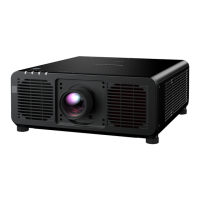
